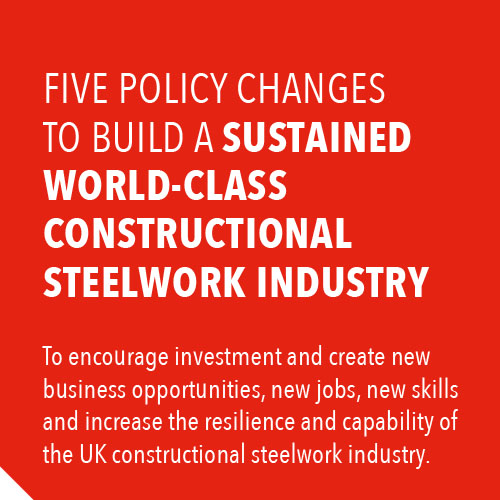
BCSA News and Insights
President's Column January 2024
02/01/2024
Category: President's Column
Until global steel production from lowercarbon technology matches global demand, it is now becoming widely understood that specifying your steelwork supply from 100% scrap-based Electric Arc Furnace (EAF) production in preference to traditional Blast Oxygen Furnace (BOF) production actually makes no difference to global carbon emissions, and that there are smarter ways of reducing global carbon emission such as using less material or considering refurbishment in place of new build.
Of course, we still need to discourage the continued mass production of BOF steelwork and continue developing alternative technologies such as carboncapture and green hydrogen. Nevertheless, following on from my October column, the UK can now clearly state that we are doing our bit, and we are certainly heading in the right direction.
Following the recent industry announcements, we now know that within the next few years the combined UK production of steel products using EAF technology will be around 7.5 million tonnes per annum. The credit for this must be given not only to British Steel and Tata Steel, but to other UK-based EAF producers such as Liberty Steel, Celsa, Outokumpu and Sheffield Forgemasters.
And, given that each year the UK generates over 11 million tonnes of scrap steel, simple maths tells us that if we choose to, we can become self-sufficient in feeding our own UK-based EAFs, and therefore reduce some of the reliance on steel imports. Of course, in order to ensure certainty of supply the UK will need to continue with a balanced UK/European supply chain, but this is an acceptable situation and will help to maintain healthy commercial competition across the variety of steel construction products.
So, if the uncertainty for reuse, recovery and recycling of UK steel can be reduced or even removed, is it time to refresh the methods by which we currently calculate the value of carbon emissions for steel buildings?
The current guidance for calculating the carbon value for constructional steelwork is provided by a combination of CEN standards (European Committee for Standardisation) and national guidance from the likes of RICS (Royal Institution of Chartered Surveyors) and the IStructE (Institution of Structural Engineers). These standards mandate the calculation and reporting of future benefits such as reuse or recycling, but clear guidance for including these benefits within a building’s total carbon assessment is needed since many diverse views exist and some EU states permit different approaches to the carbon calculation.
Progress is already being made to create ‘material passports’ to make it easier to reuse steel components at the end of the building’s life, and an international sustainability group (ISCG) is being formed to reevaluate and prepare carbon comparisons for all structural materials given the advanced technologies that are being pioneered around the globe.
I have always believed that owing to its full life-cycle credentials, steelwork remains the structural material of choice, and these latest developments will help to secure that belief.
Gary Simmons, BCSA President

Previous article
07/12/2023

A warm welcome to our new BCSA Industry Member – Keltbray Holdings Ltd
Kelbray is a construction engineering specialist working across the building and infrastructure sectors.
Next article
19/01/2024

Steelwork sector launches ‘manifesto’ for industry ahead of general election
The UK structural steelwork sector has launched its manifesto for the sector at an event in the House of Lords, urging sitting and prospective politicians to take action to protect and grow the industry.


